Experience Professional Support for Dental Implant Success and Recovery
Realise your dream smile with comprehensive dental implant success and recovery services. Our team provides personalised care and consistent support, focusing on achieving positive outcomes and promoting a smooth, comfortable healing process.

Understanding the Path to Dental Implant Success
Dental implant success starts with initial consultations to assess oral health and set expectations. Customised treatment plans guide the process, followed by skilled implant placement. Patients then learn about post-operative care, with regular check-ups and diligent oral hygiene supporting lasting results. The dental team’s skills and patient commitment work together to achieve positive outcomes.
What to Expect During Dental Implant Recovery
Recovery after implant surgery is a critical stage in achieving a restored smile. During this time, you should have patience and commit to proper care to promote healing and attain lasting results. Here’s what you can anticipate as part of this important process:
- Initial Discomfort:
You may experience some pain and swelling after surgery, usually peaking within 48-72 hours before gradually subsiding. - Dietary Adjustments:
A soft diet, such as yoghurt, mashed potatoes, and smoothies, will protect the implant site and promote proper healing. - Modified Oral Hygiene:
Your usual oral care routine will need temporary adjustments, with special attention given to cleaning around the implant area. - Follow-up Appointments:
Regular check-ups are necessary for monitoring healing progress and supporting successful implant integration.


Key Factors in Dental Implant Success and Recovery
A successful implant procedure and recovery process relies on several critical factors contributing to satisfactory results. Understanding these elements enhances the overall experience and long-term outcomes. Below are the key aspects that patients and dental professionals must focus on to support success:
- Patient Health:
Good overall health and lifestyle habits support dental implant recovery time and success. - Bone Quality:
The density and the volume of the jawbone at the implant site greatly influence the stability and longevity of the dental implant. - Aftercare Compliance:
Following post-operative instructions diligently is essential for proper healing and integration of the implant. - Surgical Experience:
The skills and proficiency of the dental team directly impact the precision of implant placement and overall results.
A Closer Look at Dental Implant Types
Dental implants are designed to accommodate diverse dental needs and bone structures. By learning about their different types, you can better understand which type might align with your treatment goals.
Prestige SmilesTypes of Dental Implant
-

Single Tooth Implants
Single tooth implants provide a tailored replacement for individual missing teeth. They restore function and appearance without affecting adjacent healthy teeth.
-

Multiple Dental Implants
Multiple dental implants serve as a sturdy foundation for replacing several missing teeth. They help distribute chewing forces evenly while preserving bone health and aesthetics.
-
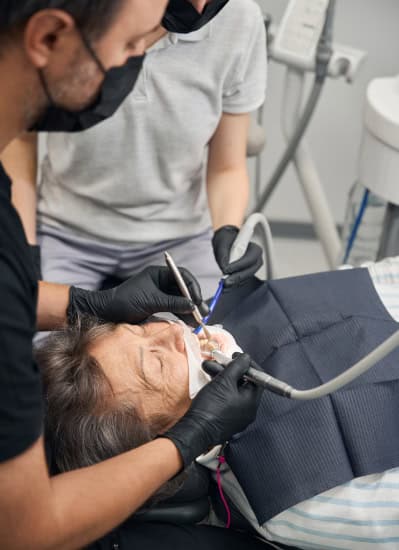
All-on-4 Dental Implants
The All-on-4 technique provides a complete arch restoration with four implants. It offers a secure and efficient teeth replacement for patients with significant tooth loss.
-
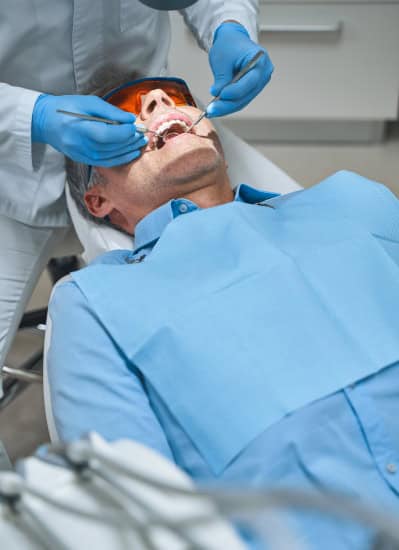
Implant-Retained Dentures
Implant-retained dentures utilise implants to hold dentures firmly in place. They improve fit and function while minimising common issues like slipping or discomfort.
Affordable Dental Care With Flexible Payment Options
Prioritising your dental health supports not only your smile but also your overall health. To make this easier, we offer payment options designed to align with your budget and lifestyle.
-
- Child Dental Benefits Schedule
- Eligible children can access essential dental services under the Australian Government’s Child Dental Benefits Schedule. Designed to support both oral and overall health, CDBS helps make early dental care more accessible for families.
-
- Dental Services for DVA Card Holders
- We proudly support Department of Veterans Affairs (DVA) cardholders, offering access to specific dental treatments to help maintain oral health with convenience and respect for your service.
-
- Afterpay
- Enjoy the flexibility of spreading your dental costs over four equal instalments — interest-free. Afterpay lets you receive the care you need now and pay over time, making dental treatments easier to manage within your budget.
-
- Zip
- With Zip, you can access dental treatments today and pay later with a flexible repayment schedule that suits you. No upfront payments needed.
-
- SuperCare
- SuperCare may assist eligible patients in accessing their superannuation early to fund necessary dental treatments. Our team can guide you through the SuperCare process to make it as smooth as possible.
-
- Pretty Penny Finance
- Looking for personalised dental financing solutions? Pretty Penny Finance offers tailored repayment options to help you manage treatment costs comfortably and confidently.
-
- HBF
- As an HBF-preferred provider, we offer quality dental care to HBF members, helping to reduce out-of-pocket expenses across a range of treatments.
-
- CBHS
- We proudly partner with CBHS Health Fund to deliver affordable, personalised dental care for members, supporting better oral health outcomes.
-
- HIF
- As a preferred provider for HIF members, we make it easier to access cost-effective dental services while maintaining the highest standards of care.
Before & After: Witness Joyful Transformations in Our Smile Gallery
Discover the incredible impact of implant dentistry in our Smile Gallery. These before-and-after photos reveal dramatic transformations, demonstrating how dental implants can improve smiles and boost confidence in ways you never imagined.

- Dental Crowns
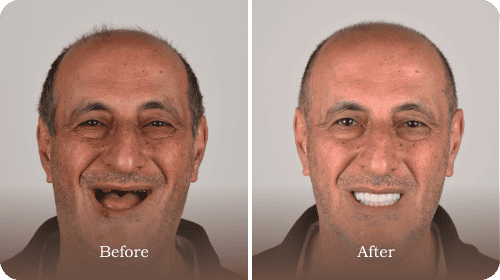
- Dental Implants

- Veneers

- Dental Crowns
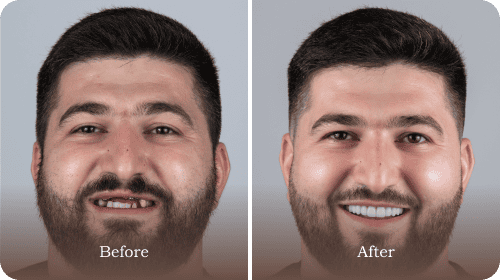
- Dental Implants
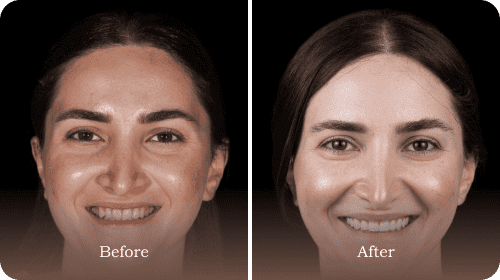
- Veneers

- Dental Crowns

- Dental Implants

- Veneers

- Dental Crowns

- Dental Implants

- Veneers

- Dental Crowns

- Dental Implants

- Veneers
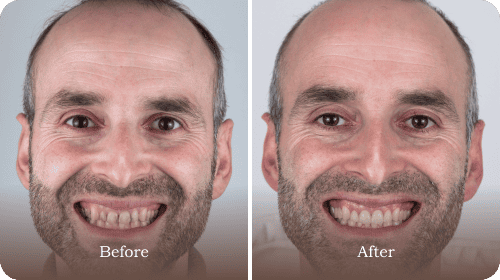
- Dental Crowns

- Veneers

- Veneers

- Veneers

- Veneers
FREQUENTLY ASKED QUESTIONS
Learn about the key steps to a smooth dental implant recovery and answers to questions about achieving favourable outcomes.
How long will soreness last after getting dental implants?
Soreness after dental implant placement is a normal part of the healing process and generally reduces over time. Here’s a general timeline:
- Days One to Three:
You may experience moderate soreness and swelling, which can be managed with prescribed or over-the-counter pain medications. - Days Four to Seven:
Soreness begins to subside significantly, although some minor discomfort around the implant site may persist. These few days after surgery are key to transitioning to light activities, such as gentle walking or stretching. - Week Two:
Much of the soreness diminishes, and swelling usually disappears. Minor tenderness when chewing or brushing is common but should not interfere with the progress of your dental implant recovery. - Week Three and Beyond:
Minimal discomfort may linger but usually fades as healing continues in the weeks after surgery, allowing for a return to normal activities.
How should I manage pain after dental implant surgery?
Managing pain after dental implant treatment is key to a successful recovery. Here are some effective pain management techniques for a smooth recovery experience:
- Follow pain medication instructions:
Take any prescribed or recommended over-the-counter pain relievers as directed by your dental professional. These implant pain management options can help alleviate moderate pain during the initial dental implant healing stages. - Apply cold compresses:
Use an ice pack on the outside of your cheek to reduce swelling. Apply it in 15-minute intervals during the first 24-48 hours after the invasive procedure. - Get plenty of rest and avoid strain:
Limit physical activity and prioritise adequate rest to reduce discomfort and promote a stress-free dental implant recovery period. - Stick to a soft food diet:
Eat soft foods like mashed potatoes and yoghurt, and avoid hot, spicy, or crunchy items, such as soups or crackers. They may irritate the surgical site and slow the implant treatment recovery. - Practise gentle oral hygiene:
Rinse with a saltwater solution or use a recommended mouthwash to keep the area clean without causing irritation.
What can I do to help reduce swelling and bruising after surgery?
Recovering from dental implant surgery requires special care to minimise discomfort and support a faster recovery. Swelling and bruising are common, but with proper care, these can be effectively managed.
- Apply a cold compress immediately after surgery:
Use an ice pack wrapped in a cloth for 10-15 minutes at a time. This constricts blood vessels, reducing swelling and preventing further bruising post-surgery. - Avoid excessive movement of the surgical site:
Minimising activity in the affected area prevents irritation and helps control swelling. This approach is essential for achieving successful outcomes after a dental implant procedure. - Sleep with your head raised:
Use extra pillows to raise your head while sleeping post-surgery. Doing so helps reduce blood flow to the insertion site, minimising swelling. - Stay hydrated:
Drinking plenty of water helps flush out toxins and supports gum health. - Avoid certain foods during the healing process:
Certain foods can irritate healing tissues, worsen swelling or bruising, and delay the dental implant recovery process. Here are the types of foods to avoid during the implant healing process:- Salty foods:
High-salt foods can dehydrate tissues and cause irritation, potentially prolonging swelling in the surgical area. This can interfere with a smooth recovery. - Acidic foods:
Items like citrus fruits or tomatoes can sting and inflame healing tissues, leading to discomfort and extending dental implant recovery time. - Spicy foods:
Spices can cause a burning sensation, increase irritation around the surgical site, and disrupt a comfortable recovery process. - Crunchy foods:
Snacks like chips or crackers can scrape the placement site, slowing the initial healing process after the surgical procedure. - Hot foods:
Excessively hot soups or beverages can aggravate swelling and hinder the formation of blood clots after dental surgery. - Chewy or hard solid foods:
Items like gum, tough meat, or raw vegetables require excessive chewing, which can strain the surgical site. Avoiding these foods helps prevent unnecessary pressure on the implant area, promoting a successful recovery.
- Salty foods:
- Use prescribed pain medication:
Follow your dentist’s post-surgery care instructions for prescription pain medications designed to reduce pain and swelling. - Incorporate gentle movement:
Avoid total inactivity after the dental implant procedure by engaging in light exercise to encourage circulation. However, refrain from strenuous tasks that may aggravate the area.
When is it safe to get back to my regular routine after dental implant surgery?
Returning to your normal routine after dental implant surgery involves a gradual process to promote healing and dental implant success. Here’s a general timeline to follow:
- First 24-48 Hours:
Focus on rest and recovery. Avoid strenuous activity and stick to a soft diet, such as pureed foods, to protect the surgical site. - Days Three to Seven:
Resume light daily activities, such as walking, but avoid exercise, heavy lifting, or anything that puts pressure on the implant area. By this point, swelling should begin to reduce. - Week Two:
Many people can return to their daily routine, provided they avoid tasks that could disrupt healing. They should refrain from eating sticky foods like gum or engaging in strenuous activities. - Weeks Four to Six:
Gradually reintroduce physical activities, but avoid high-impact sports or movements that could disturb the implant site. - Months Three to Six:
The implant healing process is completed, allowing for the placement of final restorations, such as crowns or dentures.
How long does it usually take before dental implants start to feel natural?
Implants are designed to feel natural, but the adjustment phase varies for each person. Here’s a general timeline for when they start to feel like part of your mouth:
- Weeks One to Three:
During the initial healing period, you may feel some sensitivity or mild discomfort, especially while eating or speaking. - Months One to Three:
The implant fuses with the jawbone through osseointegration, creating a stable foundation. Discomfort and swelling should subside during this time. - Months Four to Six:
After the implant has fully healed, the final restoration is placed, making it feel completely natural to chew and speak.
How much time is needed for dental implants to fully heal?
The time needed for implants to fully heal varies for each person. However, the process usually takes between three and six months. Here are the factors that influence the dental implant process’ recovery timeline:
- Bone quality:
Patients with strong, dense jawbones often have shorter recovery times than those with weaker or less dense bone structures. Good bone quality promotes faster osseointegration, which is key to implant stability. - Complexity of the dental procedure:
More complex cases, such as bone grafting or sinus lifts, may require longer healing times. These procedures may be needed to help the implant fuse with the jawbone, creating a stable foundation similar to natural teeth. - Good oral hygiene habits:
A clean and healthy environment around the implant promotes quicker healing and contributes to dental implant success. Maintaining good oral hygiene helps reduce the risk of complications that could delay the healing process. - Lifestyle choices:
Smoking or poor dietary habits can slow down the dental implant healing process. On the other hand, a balanced diet and avoiding strain on the area can support the dental implant healing stages. - Overall health:
Conditions like diabetes or autoimmune disorders can delay healing, while good general health promotes a smooth healing journey. - Adherence to post-operative care instructions:
Following your dentist’s guidance is key to success. This includes eating soft foods like mashed potatoes and maintaining good oral hygiene. These practices help reduce the risk of complications and promote healing.
What are the signs that my dental implant is healing well?
Monitoring your recovery after oral surgery is vital to promoting a successful healing process and a long dental implant lifespan. Here are key indicators of good healing:
- Reduced swelling and discomfort:
Swelling and tenderness around the implant site should decrease within the first week. - Healthy gum tissue:
The gums around the implant should appear pink and firm, with no signs of redness, minor bleeding, or discharge. - Stable implant site:
The implant should feel secure and stable without any movement when touched gently. - Improved functionality:
As the implant integrates with the jawbone, chewing and speaking will gradually become more comfortable. - No signs of infection:
The absence of unusual discharge or persistent pain and discomfort indicates a healthy recovery process.
Why are follow-up appointments so important during recovery?
Follow-up appointments are important in dental implant success and recovery. Here’s why they matter:
- Monitor healing progress:
The dental professional will assess the integration of the titanium post with the bone tissue. They will also evaluate the condition of the surrounding area during the initial healing process. These steps help keep the implant recovery time on track and progressing as expected. - Identify complications early:
Signs of infection or improper soft tissue healing can be detected and managed promptly during these follow-up visits. This allows potential issues to be addressed before they worsen, helping to reduce the risk of infection or other complications. - Adjust treatment plans:
If any issues arise, follow-up dental check-ups provide an opportunity to modify your dental implant treatment plan to promote better outcomes. They also allow for the development of additional treatment plans to support successful integration and the longevity of your replacement teeth. - Professional cleaning:
Professional cleaning may be performed to maintain the implant site, reducing risks that could shorten dental implant lifespan. - Reassess functionality:
During follow-up dental visits, your dentist can check whether the implant is stable and functional. This assessment also confirms no issues like excessive bleeding or discomfort.
What factors can lead to dental implant failure?
Implant failure can occur due to various factors that interfere with healing or long-term stability:
- Poor oral hygiene:
Inadequate cleaning can lead to oral health problems, such as infection or gum disease around the implant, compromising its stability. - Smoking or tobacco use:
Smoking reduces blood flow to the gums, delaying healing and increasing the likelihood of dental implant complications. - Insufficient bone density:
Poor bone health may not provide the necessary support for a successful dental implant integration, leading to failure. - Uncontrolled medical conditions:
Chronic illnesses like diabetes or autoimmune disorders can impair healing and increase the risk of implant failure. - Excessive stress on the implant:
Activities like grinding or clenching teeth can place undue pressure on the implant, disrupting the process of osseointegration. - Surgical or placement issues:
Improper positioning during the procedure can affect how the implant fuses and functions.
Can you reverse dental implant failure?
Implant failure can sometimes be reversed, but it depends on the stage and cause of the issue. Here are scenarios where reversal or intervention is possible:
- Early-stage peri-implantitis:
If inflammation or minor infection around the implant is caught early, it can often be addressed with cleaning and antibiotics. Adopting good oral hygiene habits may also reduce the risk of this issue. - Implant instability due to minor bone loss:
When slight bone loss is detected early, bone grafting or regenerative treatments may restore stability. These interventions can extend dental implant lifespan without requiring implant removal. - Mechanical failure of the dental crown or abutment:
Issues with the prosthetic components, such as a damaged crown, can be adjusted or replaced without affecting the implant.
For advanced cases where the implant is loose or the osseointegration process has failed, complete removal may be necessary. However, replacement is often still an option after the healing period. Contact your dentist for more information.
What signs might indicate that my body is rejecting a dental implant?
Although rare, the body can reject a dental implant. Look for the following indicators:
- Severe pain and discomfort:
Severe pain or discomfort that worsens over time could indicate an issue with implant integration or infection. This is especially concerning if it extends beyond the normal recovery period. - Swelling or redness:
Prolonged inflammation around the implant site, especially if accompanied by heat or tenderness, may signal rejection. Discomfort and swelling should usually subside within three to five days after dental implant surgery. - Loose Implant:
An implant that feels unstable or moves slightly could indicate failure to integrate with the jawbone. - Gum recession:
Pulling back of the gum tissue around the implant may expose the metal post and compromise implant stability. - Pus or discharge:
Any fluid leaking from the implant site suggests an infection requiring immediate attention. This symptom indicates a higher risk of infection that could compromise the implant and potentially spread to surrounding natural teeth.
If you experience any of these symptoms, contact your dentist immediately. They can assess the situation and determine any complications that need to be addressed to promote the long-term success of your implant.
Could stress play a role in dental implant failure?
Stress can contribute to dental implant failure indirectly by affecting physical and mental health. It can create conditions that interfere with healing and long-term dental implant success. Here are the ways it may play a role:
- Teeth grinding (bruxism):
Stress often leads to clenching or grinding, which places excessive pressure on the implant, potentially disrupting its integration. - Weakened immune response:
Chronic stress can suppress the immune system, making the body less effective at fighting infections that could compromise the implant site. - Slow healing process:
Stress increases cortisol levels, impeding soft tissue healing around the implant. - Neglected dental hygiene:
Stress increases the risk of developing mental health conditions that may lead to behavioural changes, such as neglected oral hygiene. This increases the risk of infection or complications. - Poor lifestyle habits:
Stress often leads to habits like smoking or poor diet. Both of these factors can negatively impact dental implant recovery time and success.
Additionally, stress can have an indirect impact on implant success in the following ways:
- It can potentially cause excessive bleeding during or after the implant procedure due to increased blood pressure.
- It may interfere with proper post-operative care, as stressed patients may be less likely to follow their dentist’s instructions carefully.
Discover Exceptional Dental Care. Schedule Your Visit With Us Today!
Trust us with your dental health and experience a welcoming environment, professional treatments, and personalised care. Schedule your appointment today and discover the impact we can have on enhancing your smile.